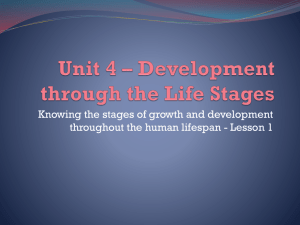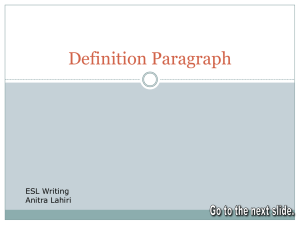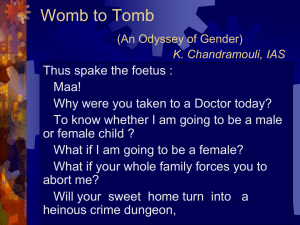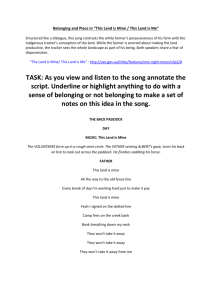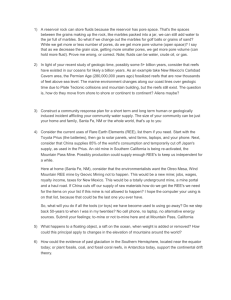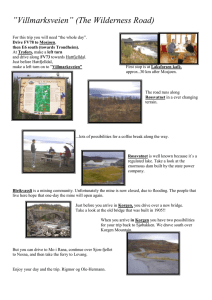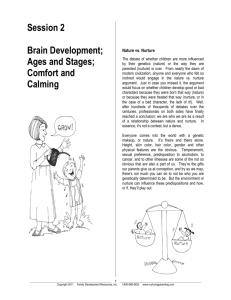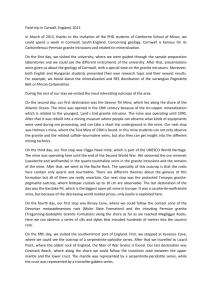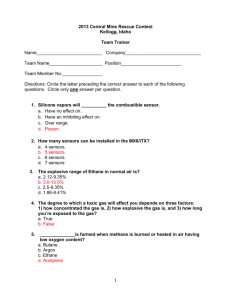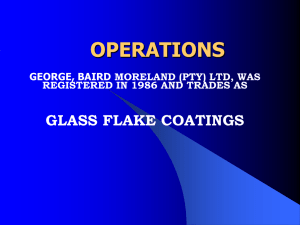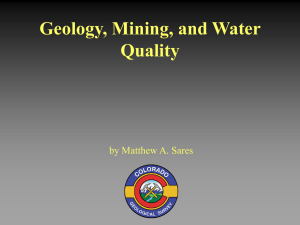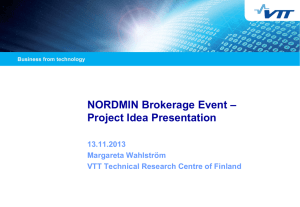Module 2 Lesson 2
advertisement
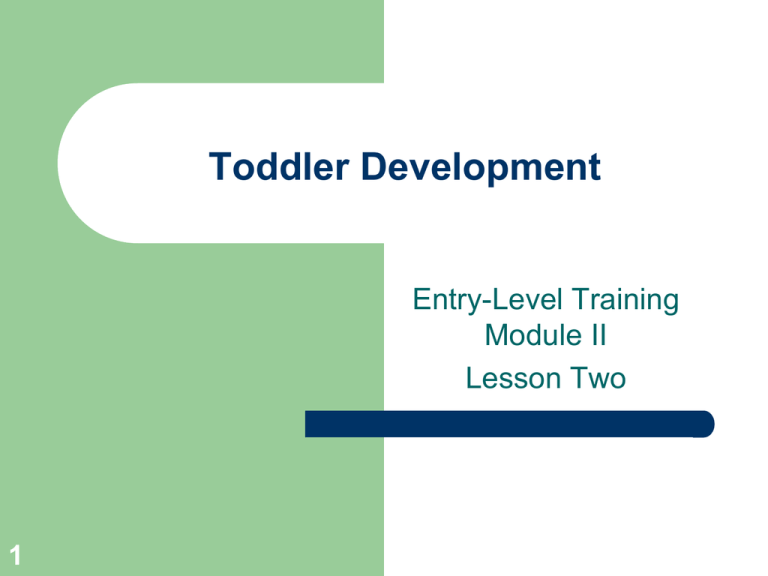
Toddler Development Entry-Level Training Module II Lesson Two 1 Understanding Toddlers 2 Sensorimotor learners moving towards preoperational Dramatic increase in language skills For optimum development, they need to “learn how to learn” before they’re three Behaviors are more experimentation than malicious misbehavior Becoming separate, capable individuals that can function independently (autonomous) Built-in desire to test out their abilities Want adults to act as a secure base from which to explore Toddler Property Laws 3 If I want it, it’s mine. If I give it to you and change my mind later, it’s mine. If I can take it away from you, it’s mine. If I had it a little while ago, it’s mine. If it’s mine, it will never belong to anybody else, no matter what. If we are building something together, all the pieces are mine. If it looks just like mine, it’s mine. Developmental Milestones 12 - 18 Months 4 Follow simple directions Enjoy being with other children Walk alone a few steps Use single words Drink from a cup Show sympathy for others Walk well; run Developmental Milestones 18-24 months 5 Stack blocks Show sympathy for others Walk well; run Use words to name familiar objects/ people Eat with a spoon Developmental Milestones 24-30 months 6 Points to 4-5 body parts Imitate behaviors of adults and peers Use crayons Use short sentences Help in dressing Developmental Milestones 30-36 months 7 Engage in pretend play Play cooperatively with other children Walk up and down stairs Say first and last name Show interest in toilet training Developmental Alerts If, by 36 months, a child DOES NOT: – – – – – – – – – 8 Eat a fairly well-rounded diet Walk confidently with few stumbles or falls Avoid bumping into objects Carry out simple 2-step directions Point to/name familiar objects Enjoy being read to Show interest in other children Indicate a beginning interest in toilet training Sort familiar objects according to a single characteristic (color, size, etc.) Developmental Needs 9 Opportunities to develop a sense of autonomy (self-help skills, separation) Space to explore and develop motor/movement skills (sense of power, competence) Opportunities for challenging sensory-motor exploration (mobility) Exposure to language, opportunities to listen and express themselves Toddler Environment 10 Child-proofed*, arranged for movement Toddler-sized furniture, equipment, private spaces Choices, consistency/routine, self-help Enough materials and cozy spaces for each Supervision always, intervention only when necessary Active play, dramatic play * Child-proofing for Toddlers 11 Install safety plugs in all outlets Keep poisonous substances in locked cupboards as high as possible Lock drawers and cupboards with sharp/dangerous objects Eliminate choking hazards Remove unsteady furniture Use gates, locks to block access to dangerous areas Appropriate Materials/Activities 12 Realistic toys and props, dramatic play/selfcare Unbreakable mirror Non-stereotypical pictures and picture books Multi-ethnic dolls Sensory play (water table, etc.) Art activities Appropriate Schedules/Routines Consistent, predictable, yet flexible Ample blocks of time, few transitions Carefully planned transitions – – 13 Advance warnings Non-verbal cues Allow for individual variations Balance of quiet and active times Caregivers interact positively during routines Hope NOT to see… 14 Restrictive; playpens, high chairs, too much equipment to move around Not child-proofed/overprotection/underprotection Large group activities/area Too many fine motor activities, few large motor activities Rigid schedule, imposed activities Impatient, unresponsive, or disrespectful caregivers Caregivers involved in power struggles, scolding, and/or punishing toddlers PLAY… Early childhood teachers must understand the significance of PLAY to children's educational development and develop skills in facilitating enriching play in early childhood classrooms. 15 Play Builds Brain Connections Play… – – – – – – – – 16 Is a framework for learning Helps a child discover what is possible Gives a child a sense of control and power Encourages a child to express him/herself Helps a child deal with feelings Provides the foundation for later academics Helps a child integrate all areas of development Is the most effective teacher of social skills




